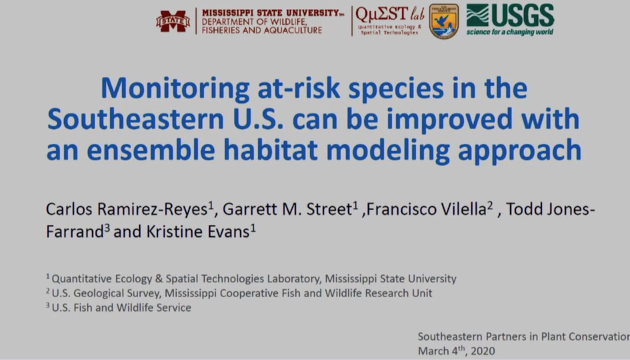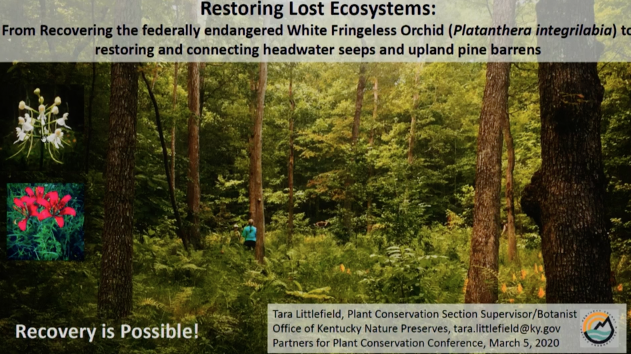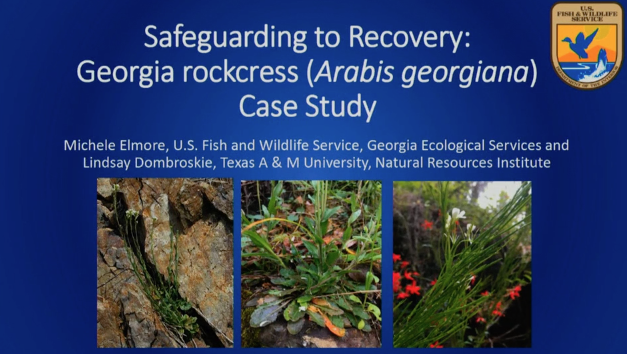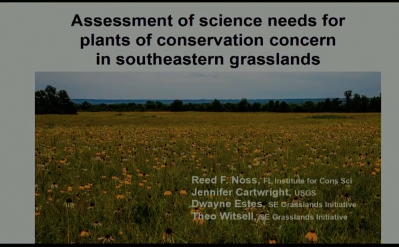
Dr. Carlos Ramirez-Reyes1, D. Todd Jones-Farrand3, Garret Street1,2, Francisco Vilella4, Kristine O. Evans 1,2 1. Department of Wildlife, Fisheries and Aquaculture, Mississippi State University 2. Quantitative Ecology & Spatial Technologies Laboratory, Mississippi State University 3. U.S. Fish and Wildlife Service 302 Natural Resources, University of Missouri 4. U.S. Geological Survey, Mississippi Cooperative Fish and Wildlife […]
Read More…

Tara Littlefield, Senior Botanist/Plant Conservation Section Manager, Office of Kentucky Nature Preserves It all started with a monitoring study of a declining White fringeless orchid (Platanthera integrilabia) population in 2007 at a State Nature Preserve in the Cumberland Plateau of Kentucky. This talk will outline this long term monitoring study of the white fringeless orchids […]
Read More…

Dr. Michele Elmore, US Fish & Wildlife Service Lindsay Dombroskie, Texas A & M University, Natural Resources Institute Georgia rockcress (Arabis georgiana Harper) is a short-lived perennial plant of the mustard family (Brassicaceae) endemic to Alabama and Georgia. In 2014, this species was listed by the U.S. Fish and Wildlife Service (Service) as “Threatened” under […]
Read More…

Dr. Reed Noss, Southeastern Grasslands Initiative, Florida Institute for Conservation Science and Southeastern Grasslands Initiative (Contractor) Jennifer Cartwright, U.S. Geological Survey Dwayne Estes, Southeastern Grasslands Initiative Theo Witsell, Southeastern Grasslands Initiative Grasslands of the southeastern United States are considered “endangered ecosystems,” with many grassland types having been reduced by more than 90% since European settlement […]
Read More…



